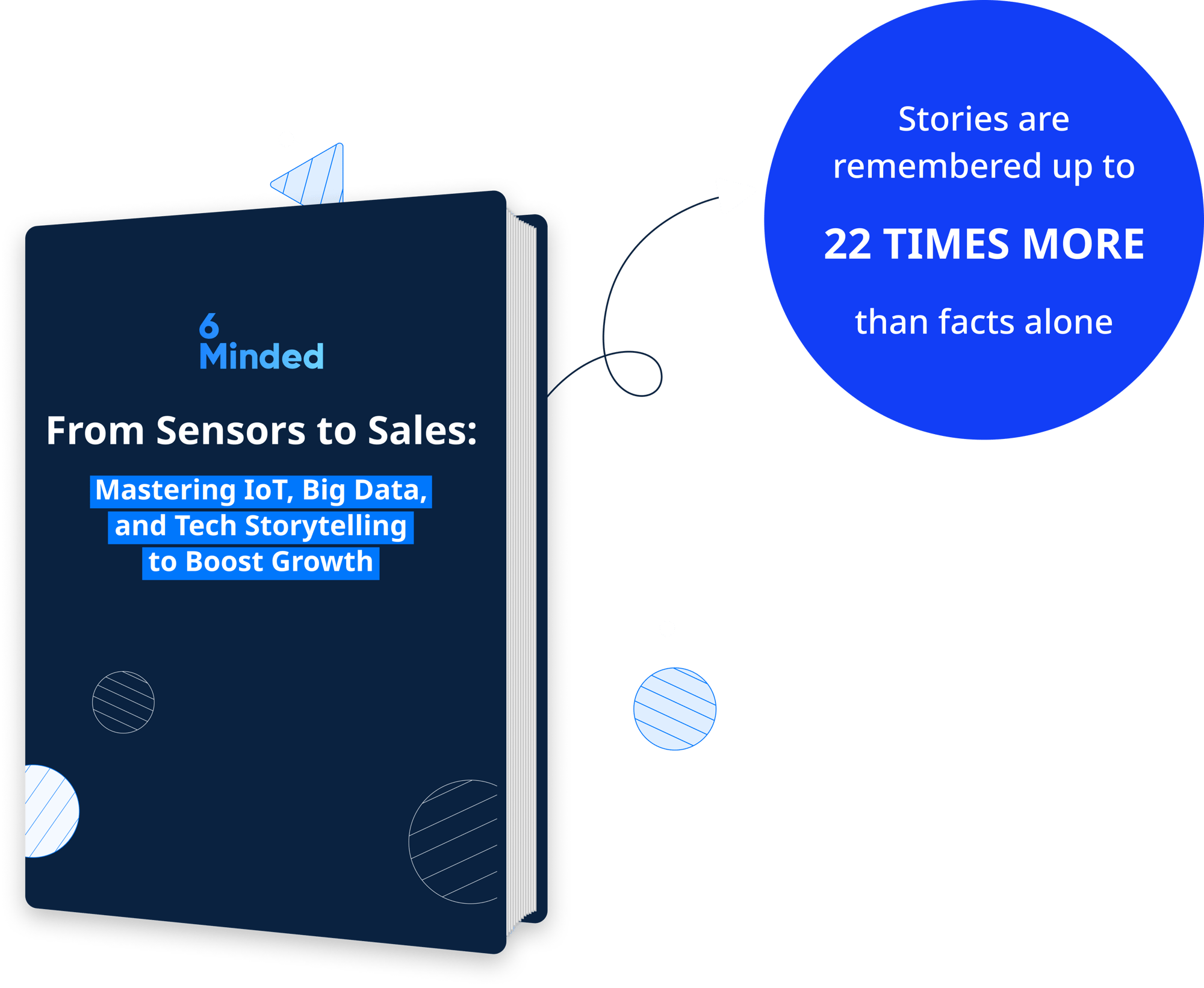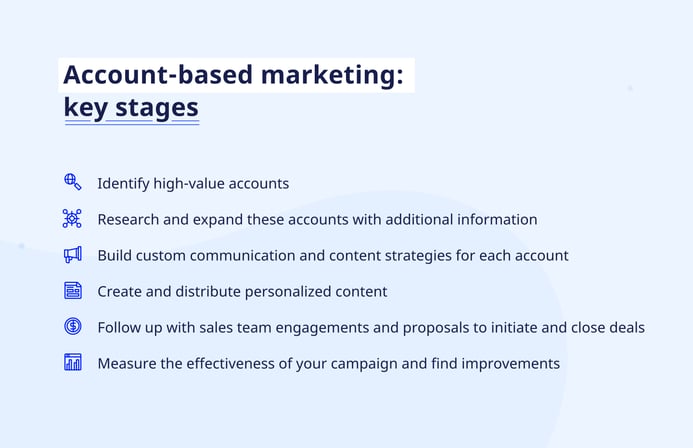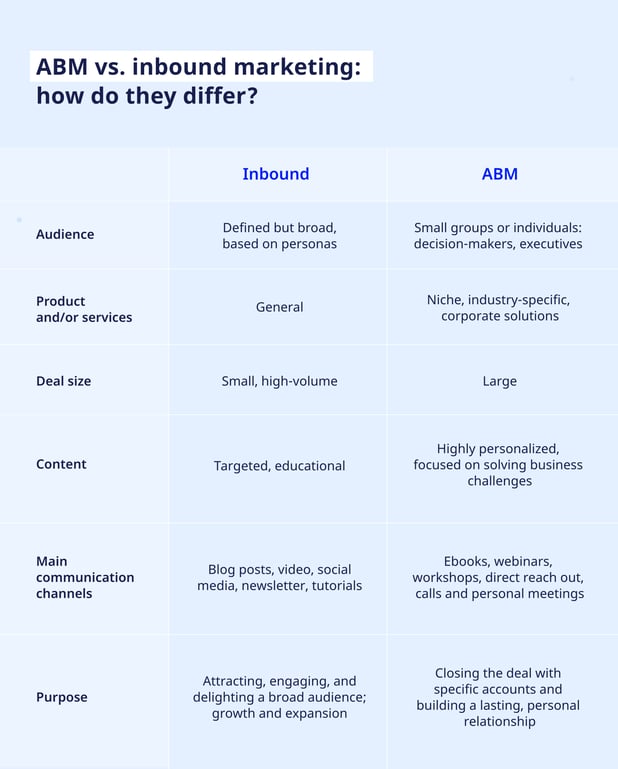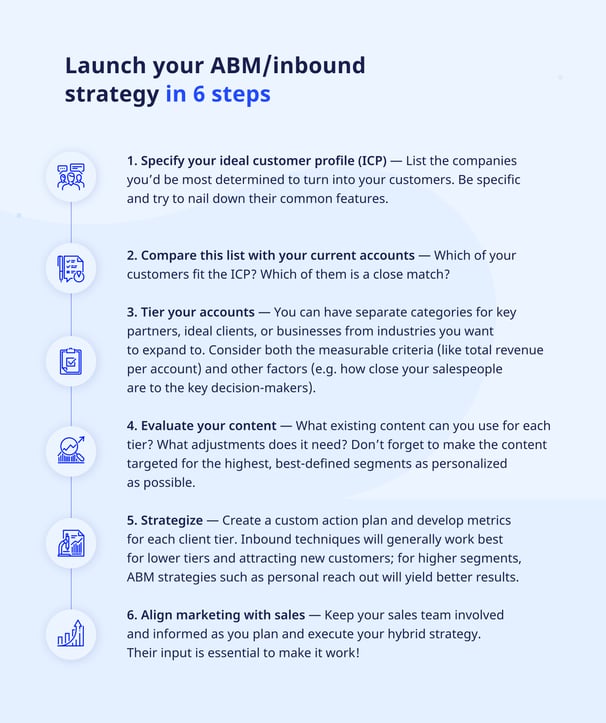Imagine you’re going fishing. You can use a few techniques to increase your chances of bringing dinner home tonight (sorry, vegetarians!). Some, like spearfishing, are high-accuracy. Using a spear requires some skill, but it is fast, precise, and discreet. You spot a fish and go for it, and it only, nothing else. Or you can go with a broader approach and fish with a net. Less selective, but more efficient. While you have little choice of what goes into your net, your chances of catching that goldfish are higher than with a spear. The economies of scale kick in.
Ok, but what does it all have to do with marketing?
More than you might think.
You see, the spear and net metaphor, although not perfect, is commonly used to explain the difference between the two principal marketing methodologies: account-based marketing (or ABM) and inbound. That’s because just like with fishing tools, choosing the right marketing strategy ultimately comes down to what your target is.
In this article, we’ll unpack everything you need to know to get started with marketing strategy. You’ll learn what ABM and inbound are, how they differ, which approach to choose for your business… and whether you even have to choose one particular.

Think of your marketing strategy as a fishing method: there are many effective tools, each with its strengths, weaknesses, skillsets, and purpose.
Inbound marketing or fishing with a net
Inbound marketing is all about targeting a broader audience. In that sense, it’s similar to a fishing net—it focuses on attracting a large number of potential customers.
Although this metaphor explains the general idea behind inbound marketing, it can mislead you into thinking that the strategy is to passively wait for any customer to come to you by chance. That couldn’t be further from the truth—if it was, we couldn’t even call it a strategy, right?
Instead, inbound marketing relies on actively creating and distributing content and experiences that are meaningful and valuable to your audience to attract them. Ideally, the content you share will help people solve problems or make their lives or work easier. Webinars, ebooks, tutorials, explainer videos, online academies, and comparison tools are just some of the content businesses use to that end.
One more thing that the net metaphor fails to capture is that inbound marketing isn’t random. After all, attracting the target audience through valuable content wouldn’t be possible without knowing who they are and what they need. One of the key first steps in developing an inbound strategy is to research and define customer personas. Only with these personas in place can marketers come up with relevant content.
But their work doesn’t end there: drawing customers-to-be to your business is just the first phase of the inbound cycle. The entire workflow consists of three stages, reflected in the model known as the inbound flywheel.
Converting strangers into customers and then promoters throughout the three stages spins the inbound wheel, stimulating the growth of your business. (Image source: HubSpot)
After the attract stage (where your audience flocks to your website or content due to inbound efforts) comes the engage phase. Here, businesses focus on turning prospects into customers. During this phase, inbound marketing uses educational content and helpful insights to guide them through the consideration and decision stages.
Next up, there’s the delight stage. The name says it all: it encompasses all efforts to surpass customer expectations to convert them into your brand ambassadors and further propel the inbound flywheel.
You don’t have to look far to find examples of successful inbound campaigns. Take streaming services like Netflix or Spotify that use their custom-made offerings, social media presence, and events like Spotify Wrapped to naturally spur word-of-mouth publicity. For educational content, it’s best to look for inspiration from companies specializing in digital growth, like Ahrefs or HubSpot. Both publish educational blogs, run online academies, and even offer certification options to teach their customers about the tools they offer and their areas of expertise: SEO and inbound, respectively.






 September 2023
September 2023
